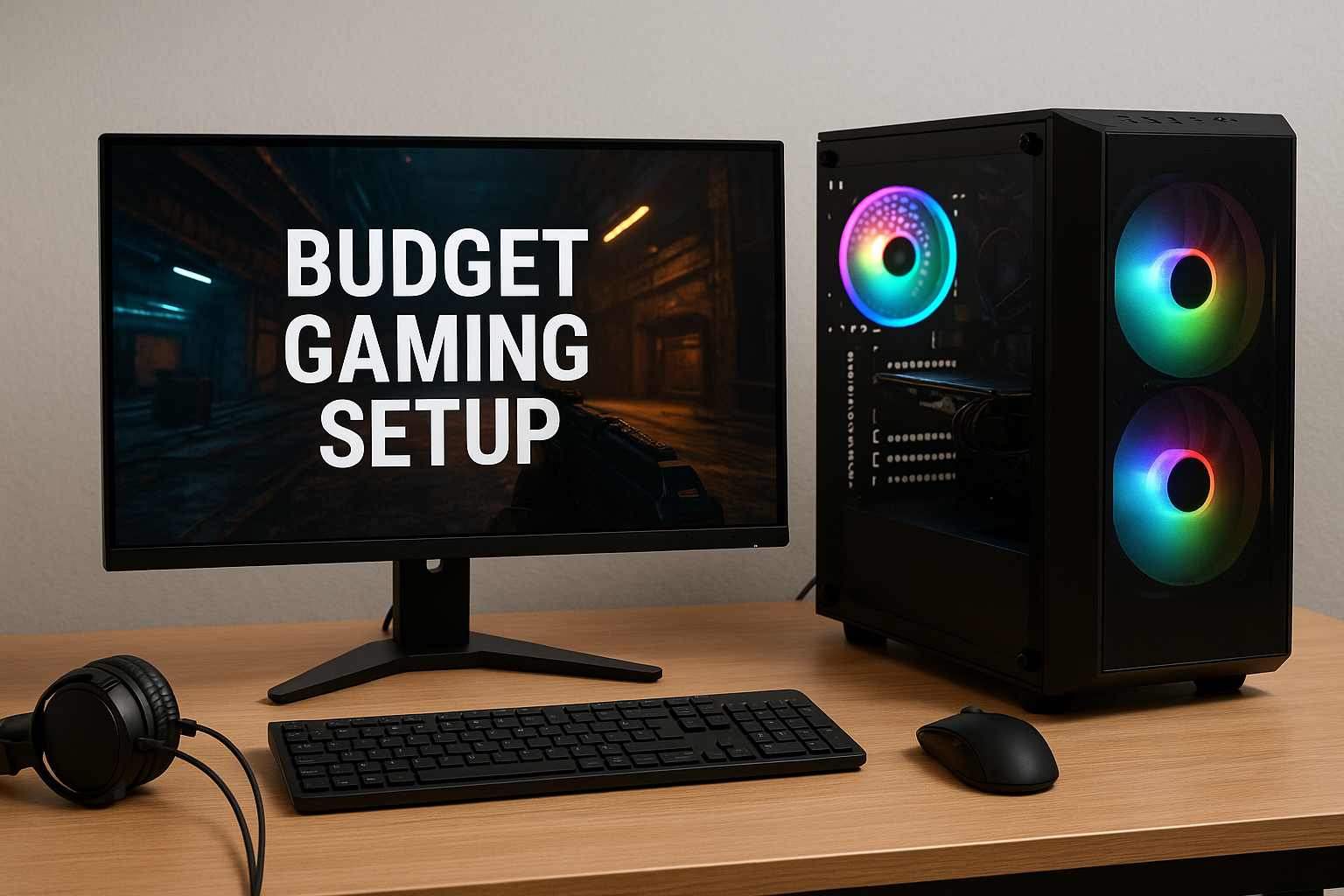Building a gaming setup doesn’t have to break the bank. With smart choices, you can assemble a budget-friendly gaming PC that delivers solid performance in modern games without sacrificing too much on visual quality or speed. Whether you’re a first-time builder or upgrading an old system, this guide will walk you through everything you need to know to build a gaming setup on a budget — including hardware, peripherals, and key cost-saving tips.
Define Your Budget and Goals
Before you start picking parts, you need to answer two important questions:
- What is your maximum budget?
Define a total amount you can spend (e.g., $500, $800, etc.). - What games do you plan to play and at what resolution?
A setup for competitive 1080p gaming will cost less than one aimed at ultra settings in 1440p or 4K.
Once you have these answers, you can balance performance vs. cost more effectively.
Focus on the Essentials First
To get the most value, prioritize components that affect gaming performance directly. These are:
1. Graphics Card (GPU)
The GPU is the heart of your gaming system. Choose based on performance-to-cost ratio.
- Best value GPUs for 1080p gaming:
- NVIDIA GTX 1650 Super
- AMD Radeon RX 6500 XT
- NVIDIA RTX 3050 (if on sale)
Avoid top-tier GPUs if your budget is limited — they often cost more than your entire build should.
2. Processor (CPU)
You don’t need a high-end CPU for most games, especially if you’re not streaming or multitasking.
- Best budget CPUs for gaming:
- AMD Ryzen 5 5600G (with integrated graphics)
- Intel Core i3-12100F
- AMD Ryzen 3 4100
Look for CPUs with 4 to 6 cores, decent clock speeds, and strong single-core performance.
3. RAM
For smooth gaming, 8GB is the minimum, but 16GB (2x8GB) is recommended.
- DDR4, 3000MHz or higher
- Dual-channel kits (for better performance)
4. Storage
Combine speed and capacity wisely:
- SSD: A 240GB–500GB SSD for Windows and games
- HDD: Optional 1TB for extra storage if needed
An SSD ensures faster loading times, smoother boot, and better responsiveness.
5. Motherboard
Choose a motherboard that matches your CPU (Intel or AMD) and offers the essential features:
- ATX or Micro ATX form factor
- 2+ RAM slots
- M.2 NVMe SSD support (if using NVMe)
Budget boards from brands like MSI, ASRock, ASUS, or Gigabyte often provide excellent value.
6. Power Supply Unit (PSU)
Never cheap out on your PSU. Go for a reliable 80 PLUS Bronze certified unit with enough wattage.
- 500W–600W is enough for most budget builds
- Look for trusted brands like Corsair, EVGA, or Cooler Master
7. PC Case
Get a functional case with good airflow and cable management options. It doesn’t need to be flashy — focus on practicality.
Example Budget Gaming Build – Around $600
| Component | Example Model | Price (approx.) |
|---|---|---|
| CPU | AMD Ryzen 5 5600G | $120 |
| Motherboard | B550 Micro ATX | $80 |
| RAM | 16GB (2x8GB) DDR4 3200MHz | $45 |
| Storage | 480GB SSD | $35 |
| GPU | Radeon RX 6500 XT | $130 |
| PSU | 550W 80 PLUS Bronze | $40 |
| Case | Basic Mid-Tower w/ airflow | $40 |
| Total | ~$490 |
Tip: Prices vary based on region and deals. Check for combo discounts or used parts to lower the cost even more.
Saving Money Without Sacrificing Performance
Here are smart ways to cut costs:
- Use a CPU with integrated graphics temporarily (e.g., Ryzen 5 5600G) until you can afford a discrete GPU.
- Buy used or refurbished GPUs and cases from trusted sellers.
- Start with 8GB RAM and upgrade later if your motherboard has extra slots.
- Skip RGB and aesthetic extras if you’re on a tight budget.
- Use onboard Wi-Fi or Ethernet instead of buying a separate adapter.
Don’t Forget the Peripherals
A gaming setup isn’t complete without monitor, keyboard, mouse, and headphones or speakers. You can still go budget-friendly here:
- Monitor: 1080p, 60Hz or 75Hz, 24” is a good entry-level choice
- Keyboard/Mouse: Budget combo kits offer solid value
- Headset: Decent wired headset with mic for under $30
If you’re on a strict budget, reusing old peripherals or buying used is totally fine.
Software and OS
You can:
- Install Windows 10/11 without activation (with limited personalization)
- Use a free Linux distro like Pop!_OS or Ubuntu for gaming on Steam
- Find OEM keys from verified marketplaces for cheap Windows licenses
Upgrades to Consider Later
Once you have a solid base, you can upgrade over time:
- Swap to a more powerful GPU
- Add more storage
- Install better cooling
- Upgrade your monitor to 144Hz for smoother gameplay
A good budget gaming build should be flexible and future-ready.
Final Thoughts: Play Smart, Not Expensive
You don’t need a $2000 setup to enjoy gaming. With a smart budget and good research, you can build a gaming PC that runs modern games smoothly at 1080p — and gives you room to upgrade as needed.
Focus on:
- Balanced parts (don’t overspend on one component)
- Compatibility between CPU, GPU, and PSU
- Cooling and airflow for longevity
Gaming is more accessible than ever. With the right approach, your budget gaming setup can be powerful, efficient, and ready for hours of fun.
